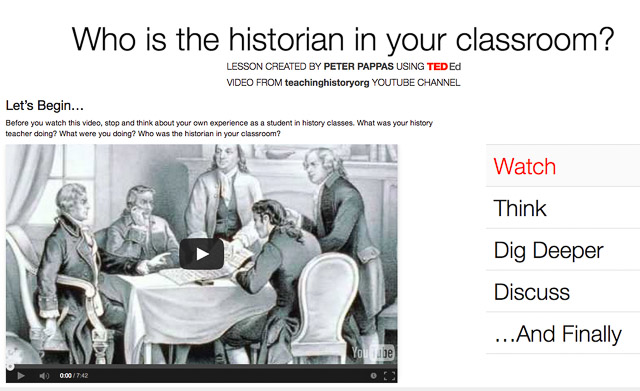 In the early part of my high school social studies teaching career, I saw myself at the center of the classroom. I was the focal point of the learning. I played resident historian – reading, crafting lectures and dispensing history to my students. They were on the periphery of the learning – waiting for my instructions, checking back with me for approval, giving me back my lecture on the unit test. Even the whole class discussions “flowed through” the teacher. Students directed their responses to me. I commented after each student with my approval or directing another student to give it a try. Without realizing it, I taught my students the only thing worth knowing was something coming from their teacher.
In the early part of my high school social studies teaching career, I saw myself at the center of the classroom. I was the focal point of the learning. I played resident historian – reading, crafting lectures and dispensing history to my students. They were on the periphery of the learning – waiting for my instructions, checking back with me for approval, giving me back my lecture on the unit test. Even the whole class discussions “flowed through” the teacher. Students directed their responses to me. I commented after each student with my approval or directing another student to give it a try. Without realizing it, I taught my students the only thing worth knowing was something coming from their teacher.
With time I learned to stop working so hard at being the smartest person in the room. With practice, I honed the skills of an instructional designer – an architect of learning environments – “spaces” where the thinking was done by my students.
I try to model that “architectural approach” in my social studies methods class. Take a look at today’s class, (University of Portland) you’ll see that I’m not the focal point of the lesson. By “flipping” a few instructional components and providing a student-driven evaluation, my students will be at the heart of the lesson. I’ll be floating at the periphery. Here’s a summary:
The students have written drafts for their first authored posts on EdMethods, our class WordPress blog. While I assigned the format of their post – they have selected the content. Before posting they will go through two peer reviews in today’s class and then make revisions based on the feedback. Instead of writing for their teacher they are writing for the web. Rather than being graded by the teacher, the quality of their work will be assessed by their peers before they “turn it in” for publication on the web.
Most of my students are new to WordPress. Rather than force the whole class to sit through my “How to use WordPress” lecture, I used the QuickTime Player to prepare ten brief (under 2 mins) video micro-lessons on posting to WordPress. Students can use that “just-in-time instruction” for exactly what they need to complete the posting process. That frees me to work with students who might want to make major revisions to their posts or need extra help with WordPress.
Next week, our class will focus on historic thinking skills. I want to use our class time to actually dohistorical thinking tasks, so I wanted to flip the content delivery. I used TEDEd’s great lesson builder to annotate an existing YouTube video with questions, student reflections and further readings. See Who is the historian in your classroom?
Interesting in flipping a lesson? Here’s info on my Flipped Classroom Workshop.

Image Credit:
Flickr: Thomas Hawk – Hub and Spokes

